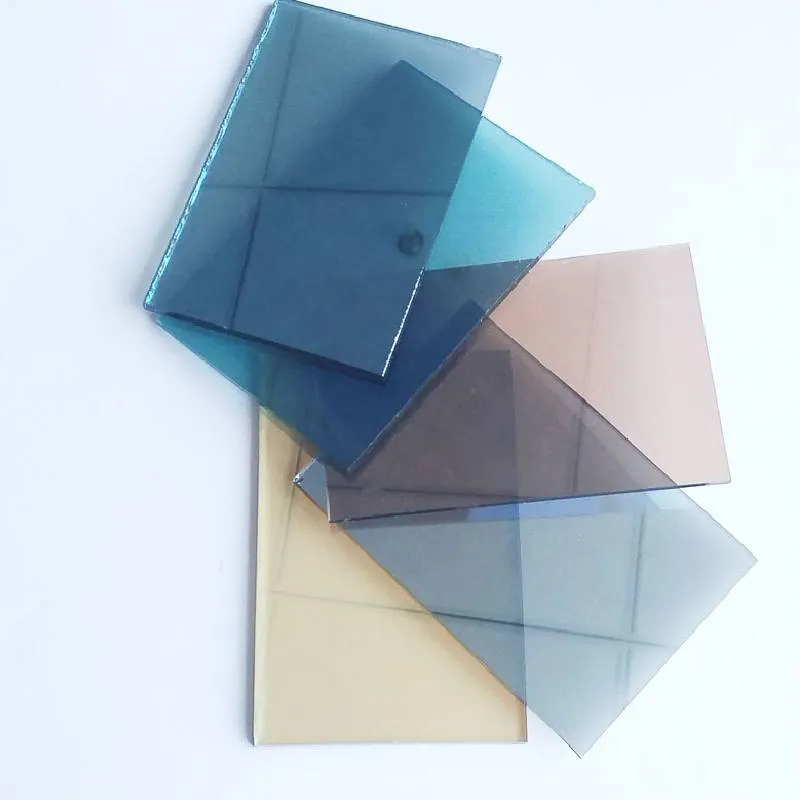The Process of Making Tempered Glass
Tempered glass, also known as toughened glass, is a type of safety glass that undergoes a specific heat treatment process to enhance its strength and durability. The process of making tempered glass involves several critical steps, each contributing to the final product's ability to withstand high temperatures and impacts.
The journey begins with selecting the right raw materials. High-quality glass is preferred to ensure optimal results. Once the raw glass is prepared, it is cut to the desired dimensions. Precision is key in this stage, as any defects may affect the safety and performance of the tempered glass.
After cutting, the glass is subjected to a rigorous washing process. It is essential to remove any dirt, oil, or impurities that could interfere with the subsequent thermal treatment. This washing process typically involves a combination of detergents and rinsing with high-purity water, ensuring that the surface of the glass is pristine.
process of making tempered glass
Following the cleaning, the glass is placed in an oven, where it is heated to temperatures between 600 to 700 degrees Celsius (about 1112 to 1292 degrees Fahrenheit). This heating process is known as annealing, and it allows the glass to reach a uniform temperature. Maintaining this temperature for a sufficient period is crucial, as it ensures that the internal structure of the glass becomes more malleable, preparing it for the next stage.
Once the glass has reached the desired temperature, it is rapidly cooled in a process called quenching. This involves passing cool air over the surface of the glass, allowing the outer layers to cool significantly faster than the inner layers. The rapid temperature change creates a compressive stress on the surface of the glass, which enhances its strength. As a result, tempered glass is about five to six times stronger than standard glass of the same thickness.
Finally, after the glass is tempered, it undergoes rigorous quality control. This step ensures that the glass meets safety standards and specifications, checking for any visual defects such as bubbles or distortions. Once it passes inspection, the tempered glass is ready for use in various applications, including windows, shower doors, glass doors, and facades.
In conclusion, the process of making tempered glass is a complex yet fascinating procedure that transforms ordinary glass into a robust material. Through careful selection of materials, precise cutting and heating, and rapid cooling, manufacturers create a product that enhances safety and performance in everyday applications.
 Afrikaans
Afrikaans  Albanian
Albanian  Amharic
Amharic  Arabic
Arabic  Armenian
Armenian  Azerbaijani
Azerbaijani  Basque
Basque  Belarusian
Belarusian  Bengali
Bengali  Bosnian
Bosnian  Bulgarian
Bulgarian  Catalan
Catalan  Cebuano
Cebuano  Corsican
Corsican  Croatian
Croatian  Czech
Czech  Danish
Danish  Dutch
Dutch  English
English  Esperanto
Esperanto  Estonian
Estonian  Finnish
Finnish  French
French  Frisian
Frisian  Galician
Galician  Georgian
Georgian  German
German  Greek
Greek  Gujarati
Gujarati  Haitian Creole
Haitian Creole  hausa
hausa  hawaiian
hawaiian  Hebrew
Hebrew  Hindi
Hindi  Miao
Miao  Hungarian
Hungarian  Icelandic
Icelandic  igbo
igbo  Indonesian
Indonesian  irish
irish  Italian
Italian  Japanese
Japanese  Javanese
Javanese  Kannada
Kannada  kazakh
kazakh  Khmer
Khmer  Rwandese
Rwandese  Korean
Korean  Kurdish
Kurdish  Kyrgyz
Kyrgyz  Lao
Lao  Latin
Latin  Latvian
Latvian  Lithuanian
Lithuanian  Luxembourgish
Luxembourgish  Macedonian
Macedonian  Malgashi
Malgashi  Malay
Malay  Malayalam
Malayalam  Maltese
Maltese  Maori
Maori  Marathi
Marathi  Mongolian
Mongolian  Myanmar
Myanmar  Nepali
Nepali  Norwegian
Norwegian  Norwegian
Norwegian  Occitan
Occitan  Pashto
Pashto  Persian
Persian  Polish
Polish  Portuguese
Portuguese  Punjabi
Punjabi  Romanian
Romanian  Russian
Russian  Samoan
Samoan  Scottish Gaelic
Scottish Gaelic  Serbian
Serbian  Sesotho
Sesotho  Shona
Shona  Sindhi
Sindhi  Sinhala
Sinhala  Slovak
Slovak  Slovenian
Slovenian  Somali
Somali  Spanish
Spanish  Sundanese
Sundanese  Swahili
Swahili  Swedish
Swedish  Tagalog
Tagalog  Tajik
Tajik  Tamil
Tamil  Tatar
Tatar  Telugu
Telugu  Thai
Thai  Turkish
Turkish  Turkmen
Turkmen  Ukrainian
Ukrainian  Urdu
Urdu  Uighur
Uighur  Uzbek
Uzbek  Vietnamese
Vietnamese  Welsh
Welsh  Bantu
Bantu  Yiddish
Yiddish  Yoruba
Yoruba  Zulu
Zulu 

